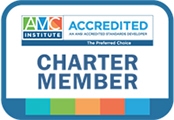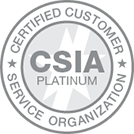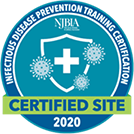The attendee experience is a vital part of planning association events
Events are a cornerstone of association membership. Annual meetings, conventions, expositions, and conferences provide invaluable forums where members network, learn, discover new trends in their industry, and support the association. As the COVID-19 pandemic continues its reach across the world, associations have continued to evolve their strategies around content, distribution, customer service, and—of course—their events. As events go virtual, there are opportunities and challenges facing associations: opportunities to reach a broader audience, decrease event costs, and incorporate new technology into their education programming; challenges of earning attendees’ time when competing with work and life demands, differentiating their event from other less-robust online offerings, and maintaining audience engagement throughout the event.
As association meeting and event planners work to deliver leading-edge programming in a virtual environment, the attendee experience is a critical factor that plays into overall perceptions of the event long after it ends. Crafting an engaging event for attendees is a must for associations making the quick pivot to a virtual event and those that have months to plan.
Guiding Attendee Perceptions
As meetings go virtual, conveying what attendees can experience and setting the stage for the experience begins with an extensive communications plan. The American Transplant Congress (ATC) had two months to prepare attendees for its virtual event, and incorporated event announcements and branding across a broad range of communications channels to build recognition, set expectations, and generate excitement.
ATC’s communication plan included updates to the event website, social media posts, emails, and more.
“There was a highly concentrated effort to make sure everything on the website, social media, and email marketing communication efforts were consistently branded to reinforce the message,” said Christina Bertino, ATC marketing manager. “We focused on driving traffic to the website, where visitors would find the most information about the event, so, everything from social media cover photos, social media graphics, the social media page content, all was updated with messaging to drive traffic to the website.”
Meeting Attendee Expectations
While events this fall have more time to anticipate what their virtual event needs may be, earlier in the year, association meeting and event planners were forced to pivot to virtual events in mere weeks. This short timeframe may cause associations to compromise when it comes to interactivity and features of in-person events that make their events stand out. However, finding ways to incorporate those elements virtually, thus meeting attendees’ long-held expectations of the event, can help shape the attendee experience. Maintaining, if not increasing audience engagement is vital for hosting an effective virtual meeting or event, for the shift to the digital realm opens the door for opportunities unbeknownst to live events including audience expansion and scheduling elasticity.
AH client partner, the Juvenile Products Manufacturers Association (JPMA), had just two weeks to transform their in-person event, the Best in Baby Show, into a fully virtual meeting. JPMA had to find a platform that would fit their needs with a quick turnaround, while also providing the same interactive experience attendees expected.
“We needed a platform that could promote the participating show brands and exhibitors to the large audience of retailers, media, and influencers that would have attended the in-person event,” Kelly Mariotti, Executive Director of JPMA said.
JPMA also had to pivot when it came to their highly anticipated industry awards program, the Innovation Awards, into a virtual one. They leveraged social media live streaming to engage audiences and build excitement that the awards show typically generates.
“By hosting the Innovation Awards announcement via Facebook Live, we were able to gather an audience at a point in time,” Mariotti said. “Also, points of activity throughout the show helped keep the energy level high.”
Experience Matters
While communications and branding play a critical role in building anticipation for the event and establishing what attendees can expect from the event, the actual experience shapes attendees’ overall experience and takeaways after the event.
For associations concerned about attendance, free registration—either to select programming or to the entire event—might open the door to attendees who might not otherwise attend either due to cost or travel.
“I attended the ASAE MMCC Virtual Conference mostly out of curiosity, but also because they opened it up as a free opportunity when the conference is usually something you have to pay for,” said Amy Bachhuber, an editorial designer for Association Headquarters. For Bachhuber, attending a virtual event was great for her because she could do it all in one place: her living room. She selected sessions from the program that interested her, and noted that the format, which included short breaks in between sessions, allowed her to engage more with the program and plan which sessions she wanted to view next.
The most important feature of a virtual event is the technology. The ease of use and ability to navigate the platform quickly plays directly into the user experience and overall satisfaction with the event. Kattie Krewer, a marketing account manager for Association Headquarters, noted that the ability to attend concurrent sessions was a significant factor in her overall enjoyment of the event.
“The platform made it easy to join the event,” said Krewer. “There were concurrent sessions, so it was easy to switch between them, much like switching rooms at an in-person event.” That ease of use, allowing Krewer to exercise her curiosity by moving in and out of sessions, made the event an enjoyable experience from a user perspective.
Association meeting and event planners must find new and innovative ways to craft an experience for attendees that supports the association’s mission, industry, and continued relevance going forward. Leveraging technology, format, and a robust communications plan pre- and post-event all come together to create a positive attendee experience.




